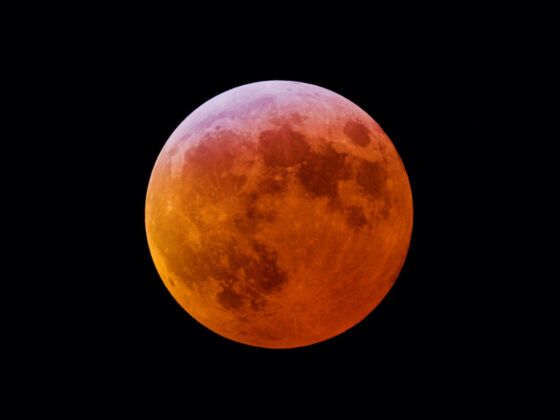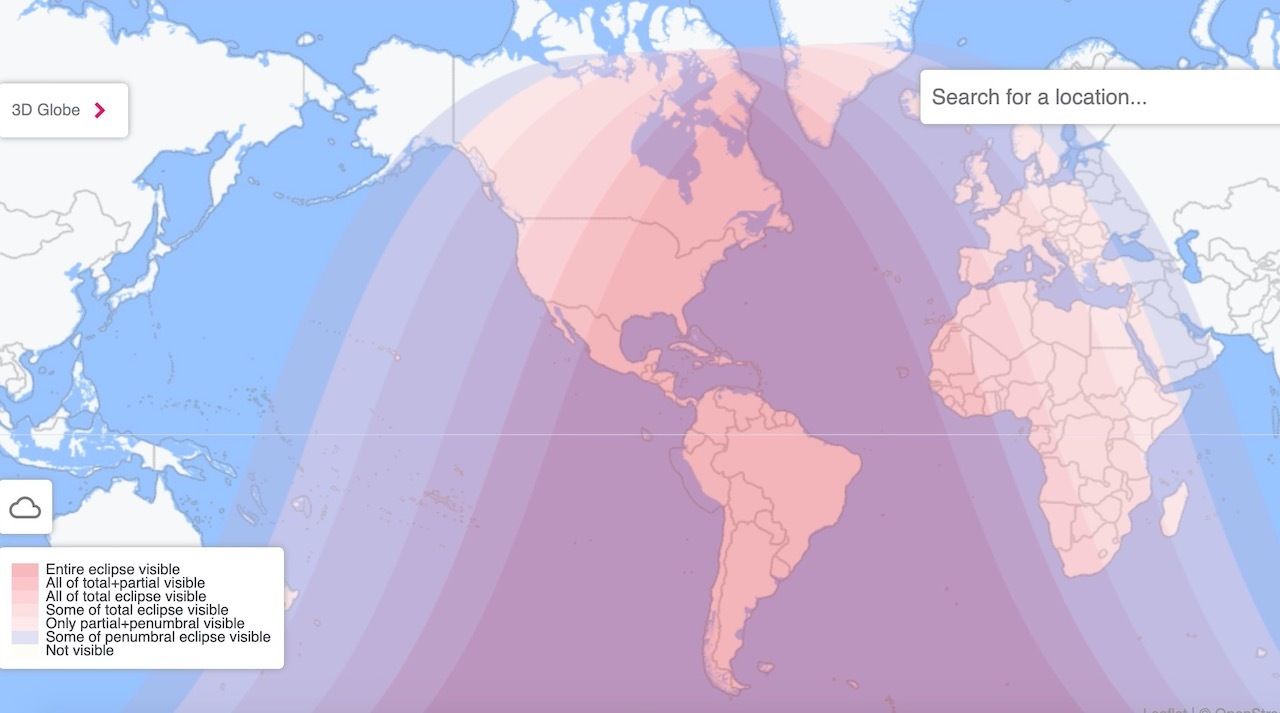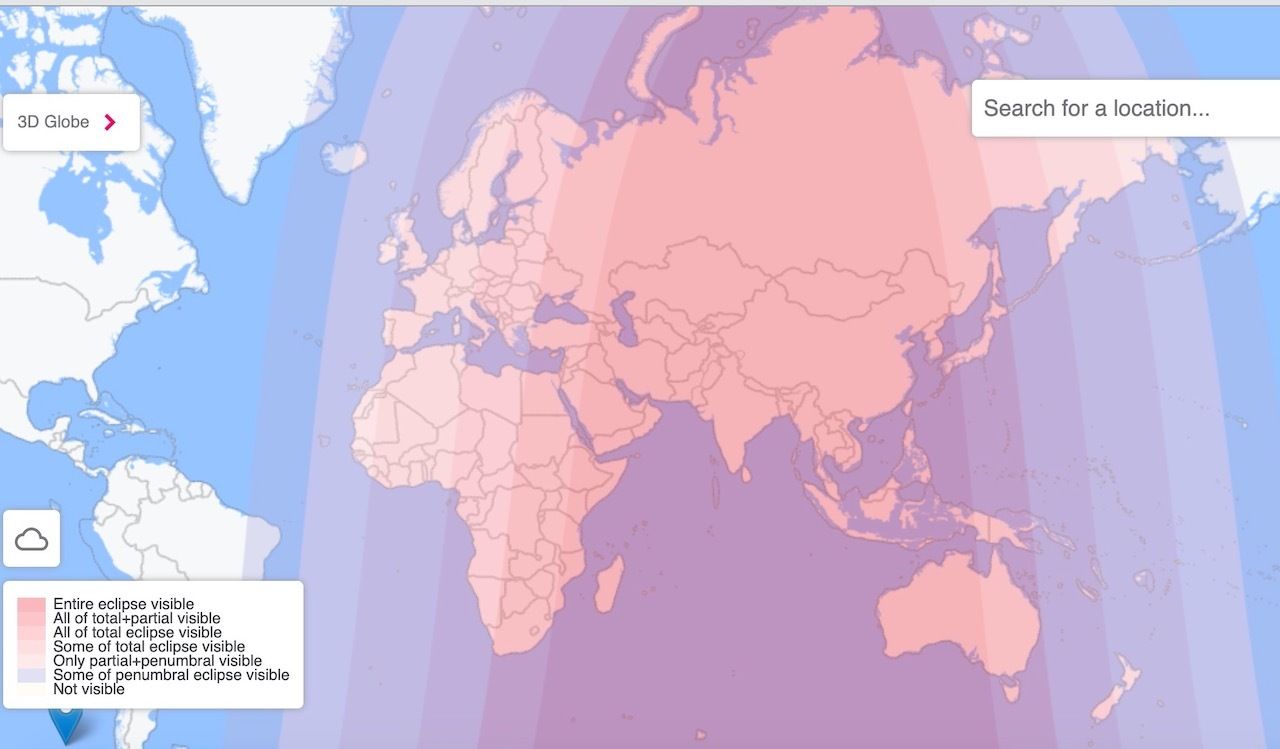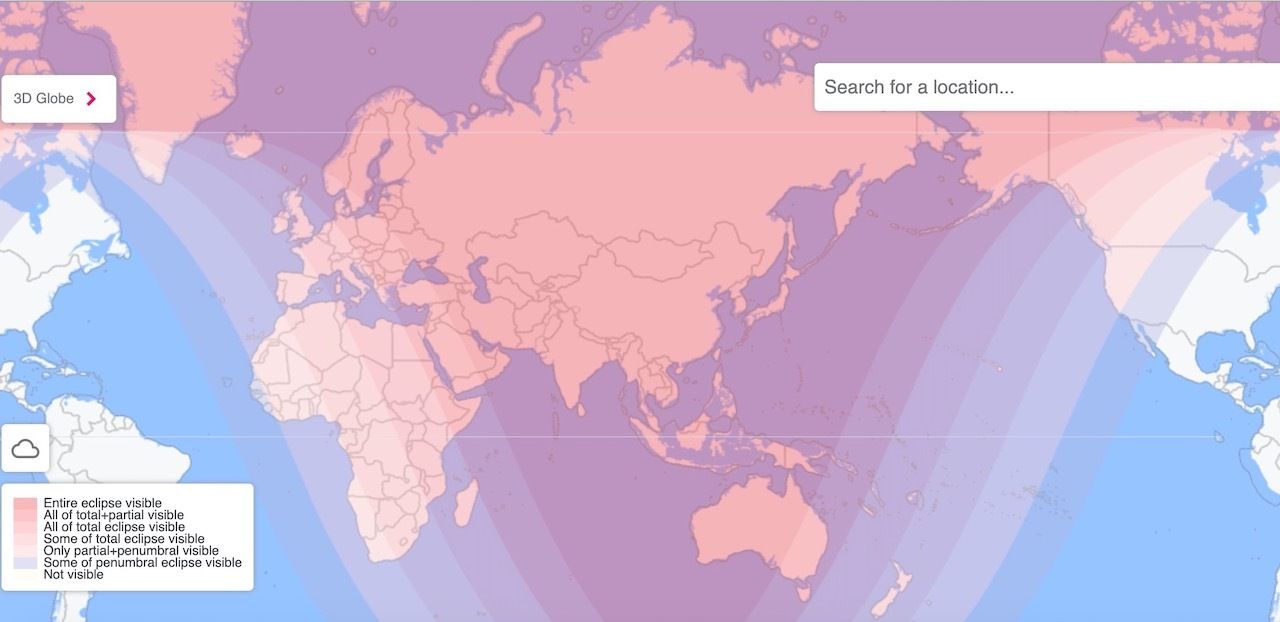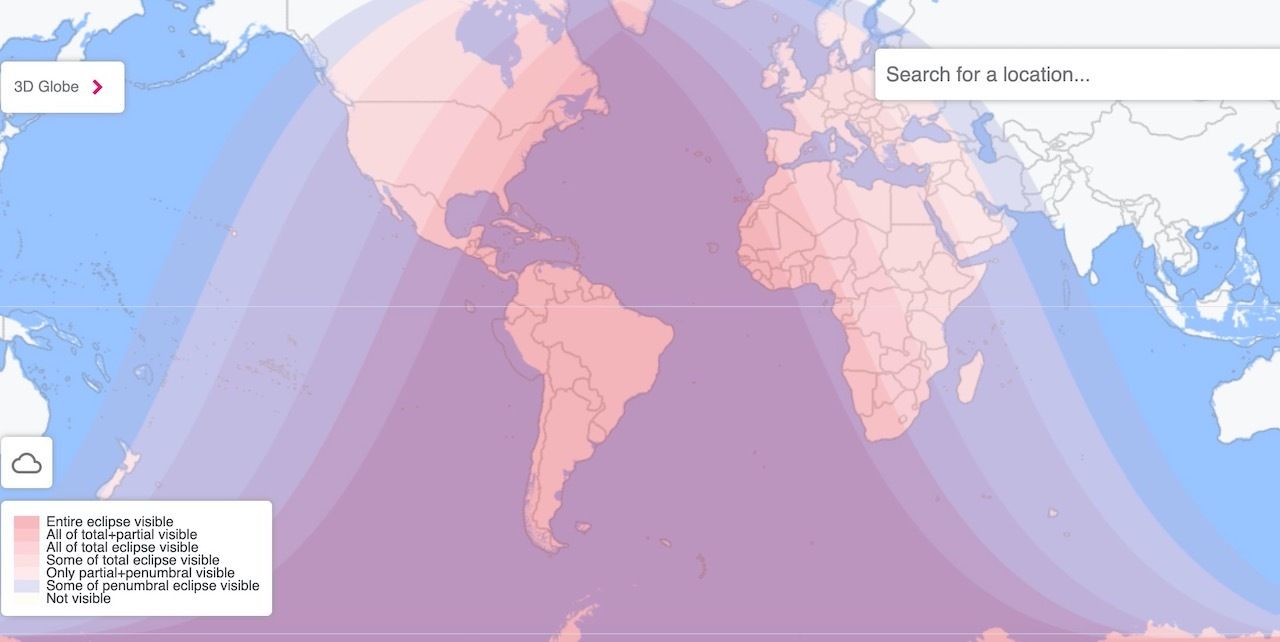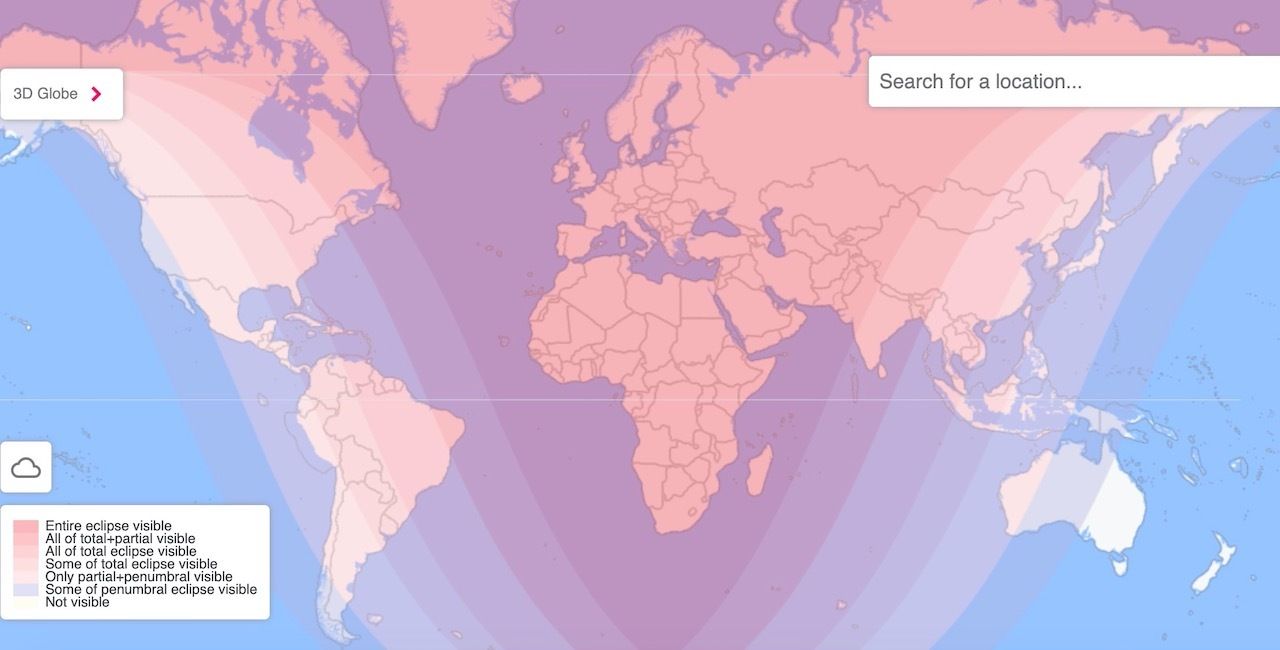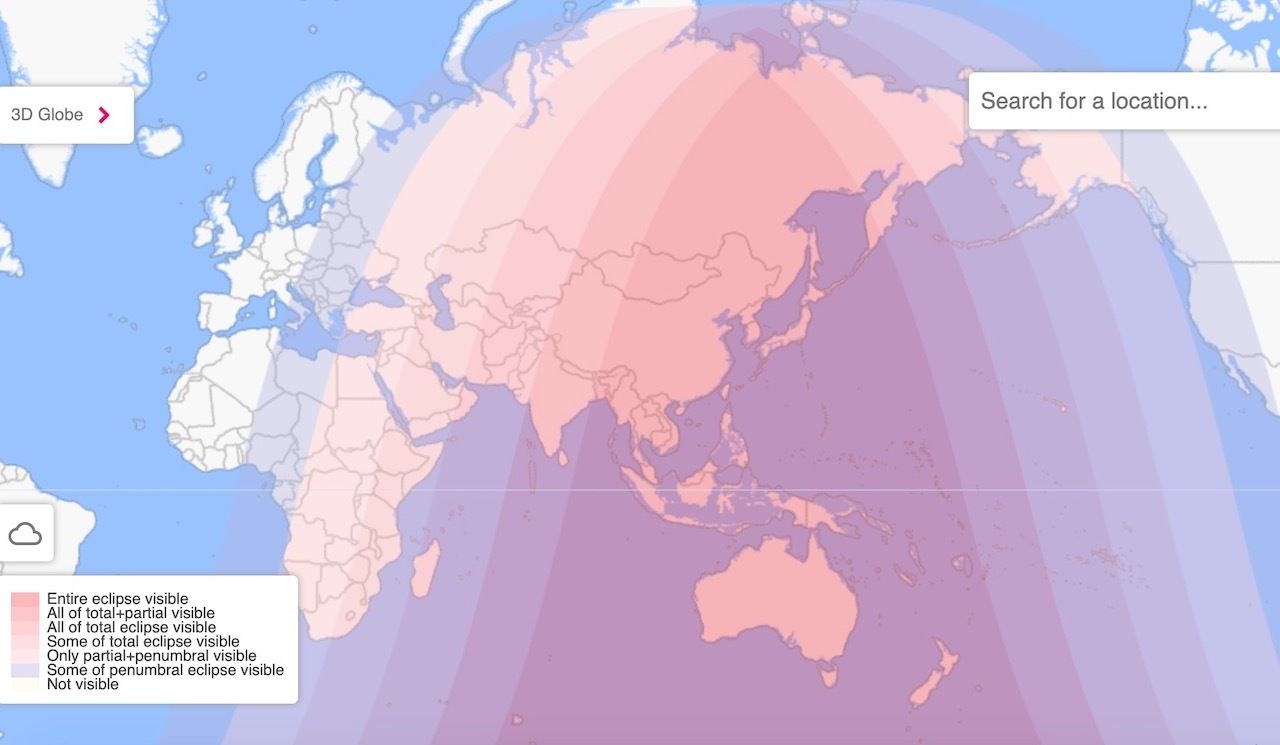A full moon is a common occurrence but on a cloudless night, it never fails to impress with its brightness and mysterious uneven surface. More exciting even, is when the full moon takes on deep shades of red and orange in a phenomenon called a total lunar eclipse or “blood moon.” Lunar eclipses happen when the earth blocks the sun’s light and projects its shadow on the full moon, an event that only occurs between zero and three times a year. Because they take place at night when most of us are sleeping, total lunar eclipses are not as popular as total solar eclipses, but they do make for a beautiful spectacle that’s worth staying up for — or even travel for. The last total lunar eclipse was in January 2019, but luckily, there are plenty more happening in the next 10 years, starting in May 2021.
All maps are from timeanddate.com, where you can also see animations of some the lunar eclipses listed below and live streams of the events.
